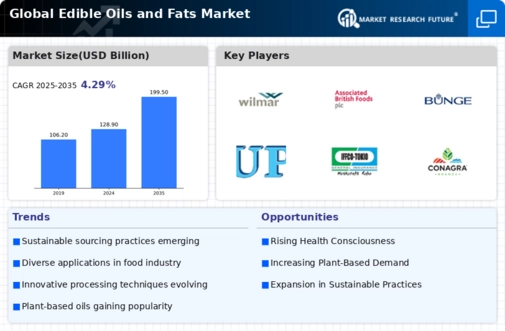Growing demand of convenient foods to propel market growth
Shortenings, margarine, confectionery fats, cooking/frying oil, and margarine are the four main conventional uses of palm oil in food goods. Both solid fat products and liquid cooking oils, particularly for purposes in industrial frying, frequently employ palm oil. It offers a wide range of technical qualities used in culinary applications, such as oxidation resistance, which extends the shelf life of finished goods. Due to its 20–22% solid fat content (SFC) at 20°C, which aids in creating fat products with a plastic range, palm oil is ideal for use as a component in shortenings and margarine.
It is prone to form small beta-prime crystals, which is advantageous for several applications, particularly in the table and industrial margarine. The functional qualities of palm oil make it a valuable ingredient in food compositions.
Palm oil
can be combined with tougher fractions like palm stearin in various applications to produce goods with the required consistency without hydrogenation. Common products manufactured using palm oil and palm kernel oil include margarine and spreads, confectionery, non-dairy goods, frying and cooking oils, shortenings, vegetable ghee or vanaspati, and vegetable ghee or vanaspati in mixes with other oils. Thus, this factor is driving the market CAGR.
For stir-fries and desserts, coconut oil has traditionally been a favorite cooking oil in Southeast Asian cuisine. ly, it is being used more and more commonly as a butter alternative in baked products, desserts, and savory cooking methods like frying, sautéing, and roasting. It works well as a vegan alternative to butter. In the kitchen, coconut oil can be used in various dishes, including sauces, salads, marinades,
smoothies
, and desserts. It can spread (or drizzle) on top of meals, cook, make granola, make a seafood dip, sauté veggies, or fry food.
Moreover, it can be used to make popcorn or as a butter alternative while prepping foods like scrambled eggs and pancakes. The preferred use for coconut oil is baking. It makes baked items richer and more flavorful, resulting in a lighter finished product. Coconut oil is increasingly used in cooking, causing the cooking Oils & Fats Market to expand. Thus, it is anticipated that this aspect will accelerate edible oils and fats market revenue.
The Global Edible Oils and Fats Market appears to be experiencing a dynamic shift towards healthier alternatives, driven by increasing consumer awareness regarding nutrition and sustainability.
U.S. Department of Agriculture



 Source: Secondary Research, Primary Research, Market Research Future Database and Analyst Review
Source: Secondary Research, Primary Research, Market Research Future Database and Analyst Review












